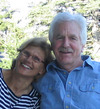Problem Solver
Richard Provonchee

In looking to solve a problem, I always try to look at the whole picture. I spend what may seem to some an inordinate amount of time asking questions. Understanding the problem and the parameters within which the solution must lie are critical.
Areas Richard Provonchee is Knowledgeable in:
That's hard to say. I'm always excited about a new challenge.
Techniques Richard Provonchee Uses:
Curiosity, observation, sense of wonder, play, open mind, willing to be wrong, brainstorming, thinking out of the box, getting back into the box, trying to know what I don't know.
Richard Provonchee's Problem Solving Skills:
- Product development - concept through design with emphasis on manufacturability
- Practical innovative problem solving - This is my most valuable skill. I believe 'practical' and 'innovative' require equal wei
- Production machinery design and build - plc, robotics, man-machine interaction/interface
Richard Provonchee's Problem Solving Experience:
- AnchorRescue (find it under that name dot com) is my current venture and involved a number of tricky problems. The first was to come up with the concept and then refine it to accommodate the need for simplicity and reliability in a marine device that will spend most of it's life exposed to the elements. The result was very few moving parts and those that do move are robust. Next was to modify the design for manufacture at a practical cost. The UHMW piece went through a number of iterations before arriving at the present configuration.
- Precast gel manufacture for Cambrex, now Lonza. I can't go into a lot of detail but the machines I designed and built are one of a kind and have many requirements unique to biomedical precast gels. These gels have precise requirements around chemical composition, temperature and fragility. In one instance, Reliant Precast Gels, I was tasked with designing a machine that could produce gels at a rate 10 fold over then current practice. PLCs, robotics and some innovative gel handling allows the machine to reach and exceed that target. All of this had to be done within the budgetary and man-power constraints of the company.
- One gel casting system required the inline mixing of micro liter volumes of multiple time-reactive reagents. Existing static mixers could not meet the mixing requirements when dealing with the low volumes and flow rates involved. I developed a disposable mixer that was low cost, easy to produce and reliably mixed the reagents.
- We wanted to provide a simple 'mix and cast' unitized DNA sequencing gel casting kit but it required keeping 4 reactive reagents, both solid and liquid, separate until use and the final mix had to be filtered. I developed a pouch (US 5,836,445) that keeps the reagents separate and secure, is easy to use and filters the mix on delivery.
- The same gel system mentioned in Solution 3 required multiple gel cassettes to be filled simultaneously with a gradient gel formulation. This required each gel to receive the identical gradient mix (concentration and reagents changing during the fill). I developed a computer driven system using disposable cartridges that filled the need and allowed for gradient changes on the fly.
- We needed to find a way to fill containers with a powered product in amounts ranging from 1 gram to 2 kilograms and accuracies of better than 1%. The product was a light power with variable density and any equipment used for filling had to be thoroughly cleaned between lots and batches of material. I developed a PLC driven system that could handle the entire fill range and meet the accuracies without a hardware change thereby minimizing setup and cleanup time.
